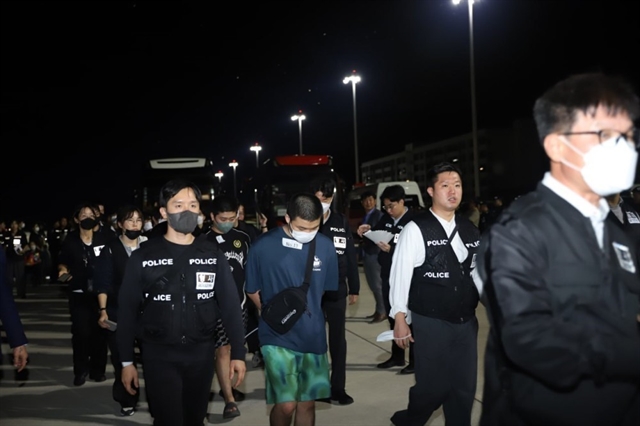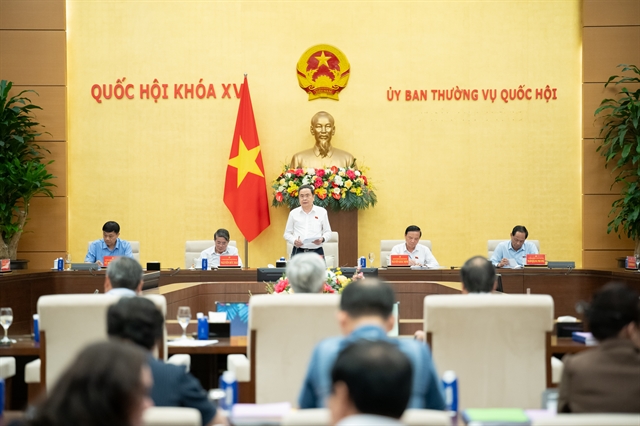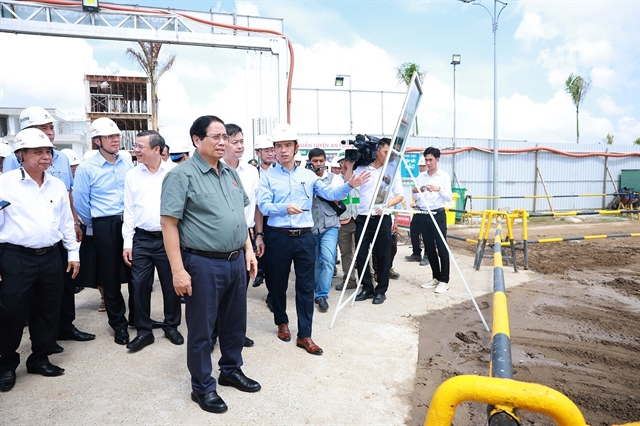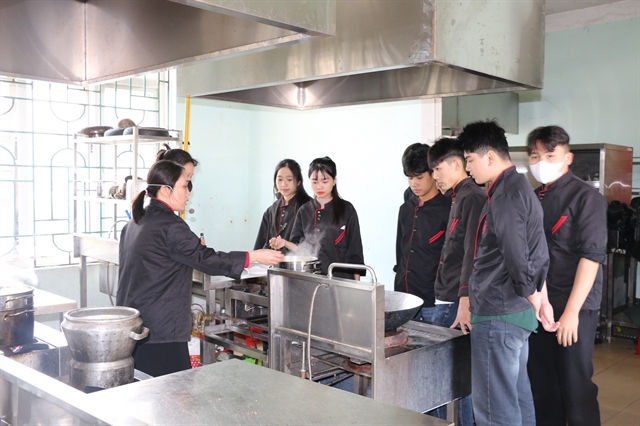 Society
Society

One of the goals of the new general education programme issued by the Ministry of Education and Training is to reduce pressure on students and give them more practical experience. But after a month-long pilot programme in six provinces and cities, experts and teachers have identified major shortcomings in the curriculum.
 |
| A class at An Vĩnh primary school in Lý Sơn island district in the south central province of Quảng Ngãi. – VNA/VNS Photo Quý Trung |
HÀ NỘI – One of the goals of the new general education programme issued by the Ministry of Education and Training is to reduce pressure on students and give them more practical experience. But after a month-long pilot programme in six provinces and cities, experts and teachers have identified major shortcomings in the curriculum.
During the trial, more than 1,400 teachers taught more than 6,000 periods. The lessons taught were either totally new and not in the current textbooks, or were in the current textbooks but taught with new methods.
After the trial, Professor Nguyễn Minh Thuyết, the programme’s chief editor, confessed that the new curriculum was still quite dense. Some content was designed to be more difficult than students’ ability to acquire it, Nông Thôn Ngày Nay (Countryside Today) reports.
"The extensive content of every lesson means that students have fewer opportunities to apply it into practice and take part in out-of-school activities," he said.
Ngô Thị Hồng Liên, vice principal of Hà Nội’s Tây Hồ High school, said that students were excited with the lessons and absorbing them well. However, the pressure placed on teachers was relatively high.
“Some teachers claimed that the new curriculum has difficult content. Teachers should be trained and should actively change teaching methods to encourage students to interact more in order to have more effective teaching,” she said.
Đặng Tuấn Anh, vice principal of
"Many teachers are used to one-way teaching without much interaction with students and are reluctant to make changes," he said.
Pedagogy research shows that if students are active in exploring knowledge and practising as they learn, the lessons will go well. Teachers who prepare carefully for the lessons will have better quality classes, according to Professor Thuyết.
Lack of infrastructure
According to experts, infrastructure determines the success and failure of a new educational programme.
The new programme requires students to take two classes per day or at least six classes per week. A standard classroom should have 35 students at the primary level and 45 students at elementary level. Classrooms should be spacious enough to organize tables and chairs in groups.
However, infrastructure conditions are said to currently pose a big challenge to many schools seeking to implement the new educational programme.
According to the Ministry of Education and Training, there are more than 28,000 educational facilities nationwide with nearly 15 million students. There are nearly 420,000 classrooms across the country, about 77 per cent of which are difficult to renovate.
The quantity of equipment in the classrooms designed for specific subjects meets only 68 per cent of demand.
An education specialist said that there were now up to 60 to 70 students per classroom in big cities. Students had to study on Saturdays and Sundays due to the lack of classrooms. Meanwhile, classes in mountainous remote areas had poor conditions.
“It is a worry that the new curriculum cannot be effectively implemented in case infrastructure lacks proper investment,” the specialist said.
Teaching equipment also plays a big role, said Bùi Thị Hồng Hạnh, vice principal of Võ Lao Primary school No.1 in Văn Bàn District of the northern mountainous
“It takes time to prepare some complicated teaching equipment. I think the curriculum’s editors should publish a list of resources supporting teachers and offer investments for schools to improve teaching quality,” she said.
Education and training Deputy Minister Nguyễn Hữu Độ compared infrastructure with the hardware of a computer, saying it is important but does not determine everything. "The software, which is a programme’s content and teachers, is far more of significant," he said.
The new curriculum is scheduled to officially take effect next year. However, Professor Thuyết said that there was still much work to do including compiling new textbooks.
He said that teachers’ comments after each pilot lesson were compiled for further improvement of the programme. After changes, the general education programme’s assessment council would assess the content once again to improve its quality. — VNS
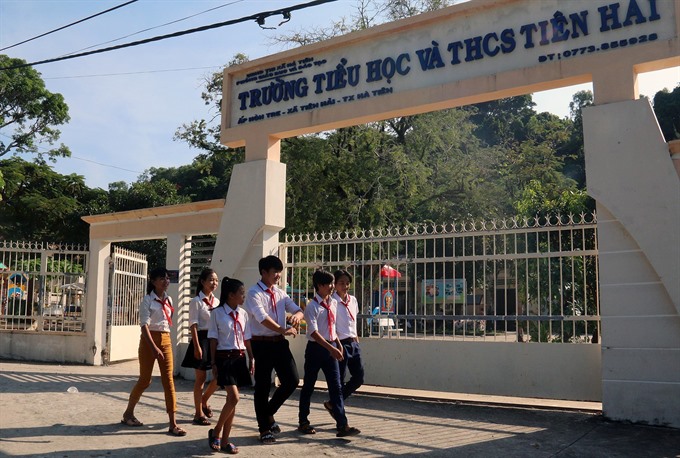 |
| Students walk to class at Tiên Hải Primary and Secondary School in Hà Tiên Town in the southern province of Kiên Giang. The Ministry of Education and Training has piloted a new general education programme which is expected to help reduce pressure on students and give them more practical experience. — VNA/VNS Photo Lê Huy Hải |

